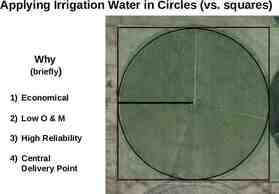Chapter 2-2 Physical Properties of Matter
17 Slides192.00 KB
Chapter 2-2 Physical Properties of Matter
Physical Properties A physical property of matter can be observed or measured without changing the matter’s identity. Some examples of physical properties are state (phase), density, solubility, ductility, malleability, magnetism, and ability to conduct electricity.
Physical Properties State (or phase) is the physical form in which a substance exists. The states of matter are solid, liquid, gas, or plasma. Density is the mass per unit volume of a substance. Solubility is the ability of a substance to dissolve in another substance.
Physical Properties Ductility is the ability of a substance to be pulled into wires. Malleability is the ability of a substance to be rolled or pounded into thin sheets.
Ductility & Malleability
Density Density is a physical property that describes the relationship between mass and volume. Density is the amount of matter in a given space, or volume. A golf ball and table-tennis (ping-pong) ball have similar volumes but the golf ball is denser because it has a greater mass.
Density In Figure 4, page 46, why do you think maple syrup is on the bottom of the six liquids? Why do you think corn oil is on the top? The denser liquids sink to the bottom of the flask. The less dense liquids rise to the top. The order in which the layers separate shows the order of increasing density.
Density
Density Knowing the density of a substance will tell you if the substance will float or sink in water. The density of water (at 4 C) is 1.00 g/cm3. If an object is less dense than water it will float in water. If the object is more dense than water it will sink.
Density
Solving for Density Density (D) is found by dividing mass (m) by volume (V). Units for density consist of a mass unit divided by a volume unit. Common units for density are g/cm3, g/mL, kg/m3, and kg/L.
Using Density to ID Substances Each substance has a density that differs from the densities of other substances. The density of a substance is always the same at a given temperature and pressure. What is the density of Helium gas? 0.00001663 g/cm3 Write this in scientific notation. 1.663 x 10-5 g/cm3
Using Density What is the density of Mercury (the only liquid metal at room temperature)? 13.55 g/cm3 Read the Math Focus section of page 47. Try the three sample questions.
Using Density What happens to the density of an object if the object is cut in half? Why? The density remains the same because cutting the object in half will divide the mass & volume by the same amount. Also, the density of a substance remains the same no matter what size it is. All matter has its own unique density.
Interesting Density Fact The density of a fresh egg is about 1.2 g/mL, and the density of a spoiled egg is about 0.9 g/mL. The density of the egg decreases as it ages because as it spoils, it loses water through the tiny pores in the shell. What would happen to a fresh egg if placed in a beaker of water? What would happen to a spoiled egg?
Physical Changes A physical change is a change that affects one or more physical properties of a substance. Freezing water to make ice or sanding a piece of wood are examples of physical changes. Physical changes do not change the identity of the matter involved, only some of the physical properties.
Phase Changes are Physical Changes






















